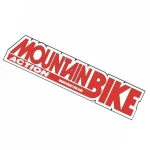LIKE FATHER, LIKE SON
Downhill racers Randy and Ryder Lawrence
 Left to right: Ryder Lawrence, Intense founder Jeff Steber, and Randy Lawrence. (Photo courtesy of Intense)
Left to right: Ryder Lawrence, Intense founder Jeff Steber, and Randy Lawrence. (Photo courtesy of Intense)
Intense recently shared the following story of Randy and Ryder Lawrence—a father and son deeply connected to the world of two wheels:
Starting in 1995, Randy Lawrence became one of the original members of INTENSE Factory Racing, competing alongside mountain biking legends Shaun Palmer and Mike Metzger. His love for racing eventually led him to a successful career in motocross, working with top athletes like Jeremy McGrath and Ryan Villopoto.
Today, his son Ryder is carrying on the family legacy with INTENSE Factory Racing. Discover their shared journey, Randy’s career highlights, and the lessons that shaped their path.
RANDY LAWRENCE INTERVIEW
We’re excited to share a story of passion, dedication, and inspiration—the journey of the Lawrence family, a father and son deeply connected to the world of two wheels.
Let’s start in 1995, when Randy Lawrence became one of the original members of INTENSE Factory Racing, joining mountain biking legends Shaun Palmer and Mike Metzger. During this time, Randy competed at the highest level of Downhill racing on the World Cup circuit for several years.
Following his mountain biking career, Randy’s love for two wheels and racing took him into motocross. There, he established himself as a highly skilled mechanic, working with riders like his brother Phil Lawrence, Doug Dubach, and Jeremy McGrath. He later transitioned into training, working with top athletes such as Ryan Villopoto, Nick Wey, Jake Weimer, Jason Anderson, Blake Wharton, Carson Mumford, Derek Drake, and Hunter Yoder.
Years later, his son Ryder has carried on the family legacy, and we’ll hear from him in the second part of this interview. But first, we dive into a Q&A with Randy, who, after all these years, remains closely connected to the INTENSE family and its founder, Jeff Steber.
1. What inspired you to pursue a career as a motocross mechanic, and how did you get your start?
I’m not sure if it was inspiration, but in 1989, my brother Phil was turning pro and needed a mechanic. I helped him out, and soon after, I took a position with another amateur rider. That led to working with Doug Dubach for Team Yamaha in 1991, which marked my official entry into professional motocross. Over the years, I worked with riders like Jeremy McGrath, winning three Supercross titles and 25 races together.
2. What were some of the most memorable moments from your career as a motocross mechanic?
The first was Doug Dubach’s win at the 1992 San Jose Supercross, my first as a mechanic. Others include Jeremy McGrath’s 1998 comeback win in Seattle, securing his fourth Supercross championship that same year, and winning the Daytona Supercross in 1998. The streak of Las Vegas wins at the final rounds over three years with Jeremy also stands out.
3. What were the key differences you noticed when transitioning from motocross to downhill mountain biking?
I went from being a mechanic managing equipment for athletes to being the athlete myself. The shift was significant as I experienced the physical and mental demands firsthand.

Randy Lawrence. (Photos courtesy of Intense)
4. What was your training regimen like as a downhill racer, and how does it compare to today’s programs?
When I first started, my training was all over the place. I overdid it because I didn’t understand concepts like base building and recovery. Today’s programs are far more structured, focusing on energy systems and balancing effort with recovery. I’ve since used what I learned to train athletes in motocross, mountain biking, and BMX, including notable names like Ryan Villopoto, Nick Wey, and Jason Anderson.
5. How has your experience as a motocross mechanic influenced your downhill racing and training philosophy?
My approach has evolved through life experiences, from managing high-level Supercross riders to training athletes across disciplines. It’s less about a specific strategy and more about adapting to different situations and learning what works best for each athlete.
6. As a father, how has your background influenced Ryder’s journey into downhill mountain biking?
From a young age, Ryder was exposed to the discipline and commitment required to compete at a high level. While I pushed him to excel, I also made sure he enjoyed the process. After transitioning to World Cup racing, he’s learned the importance of recovery, preparation, and the dedication needed to compete at the highest level.

Randy Lawrence. (Photos courtesy of Intense)
7. What advice do you give Ryder as he navigates his racing career?
Discipline and motivation are key. Winning isn’t just about skill; it’s about consistency, effort, and commitment. These are the values I emphasize to help him achieve his goals.
8. What’s next for you and Ryder in racing and career goals?
We plan to assess this past season with INTENSE Factory Racing, identify areas for growth, and set clear development goals. Our aim is for Ryder to consistently be on the podium by 2025. While we share the same objectives, we’ll need to align on the best path to achieve them.
As we approach the 30th anniversary of Randy’s involvement with the INTENSE Factory Racing team next year, we would like to express our gratitude to Randy for his passion and dedication over the years, as well as for his insightful responses during this interview.
In the second part of this interview, we will speak with Ryder, his son, who is following in his father’s footsteps and joined the INTENSE Factory Racing team in 2024. Stay tuned!
[Editor’s note: Randy Lawrence was a test rider for Mountain Bike Action a few times in the 1990s.]




